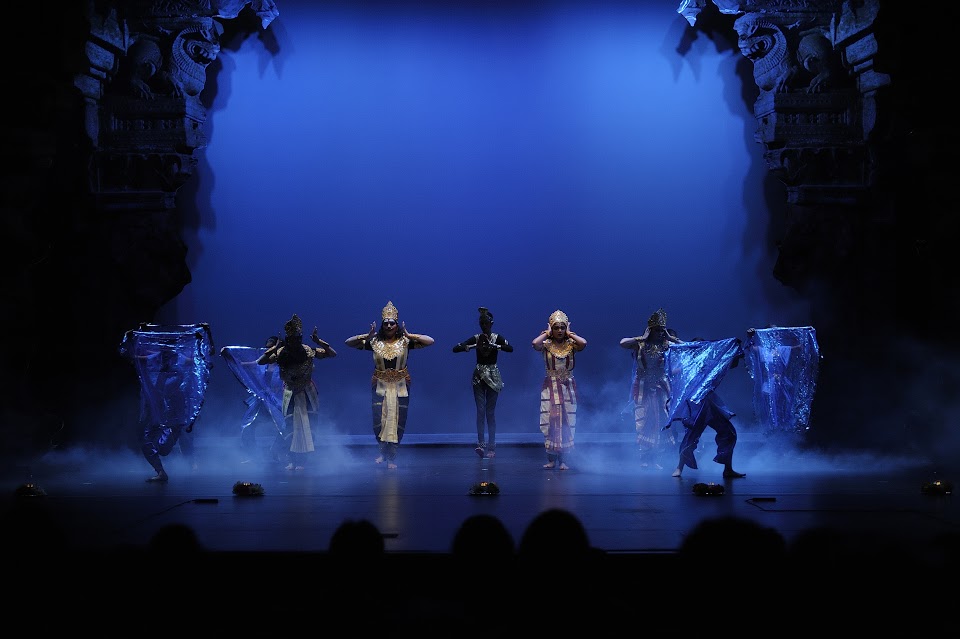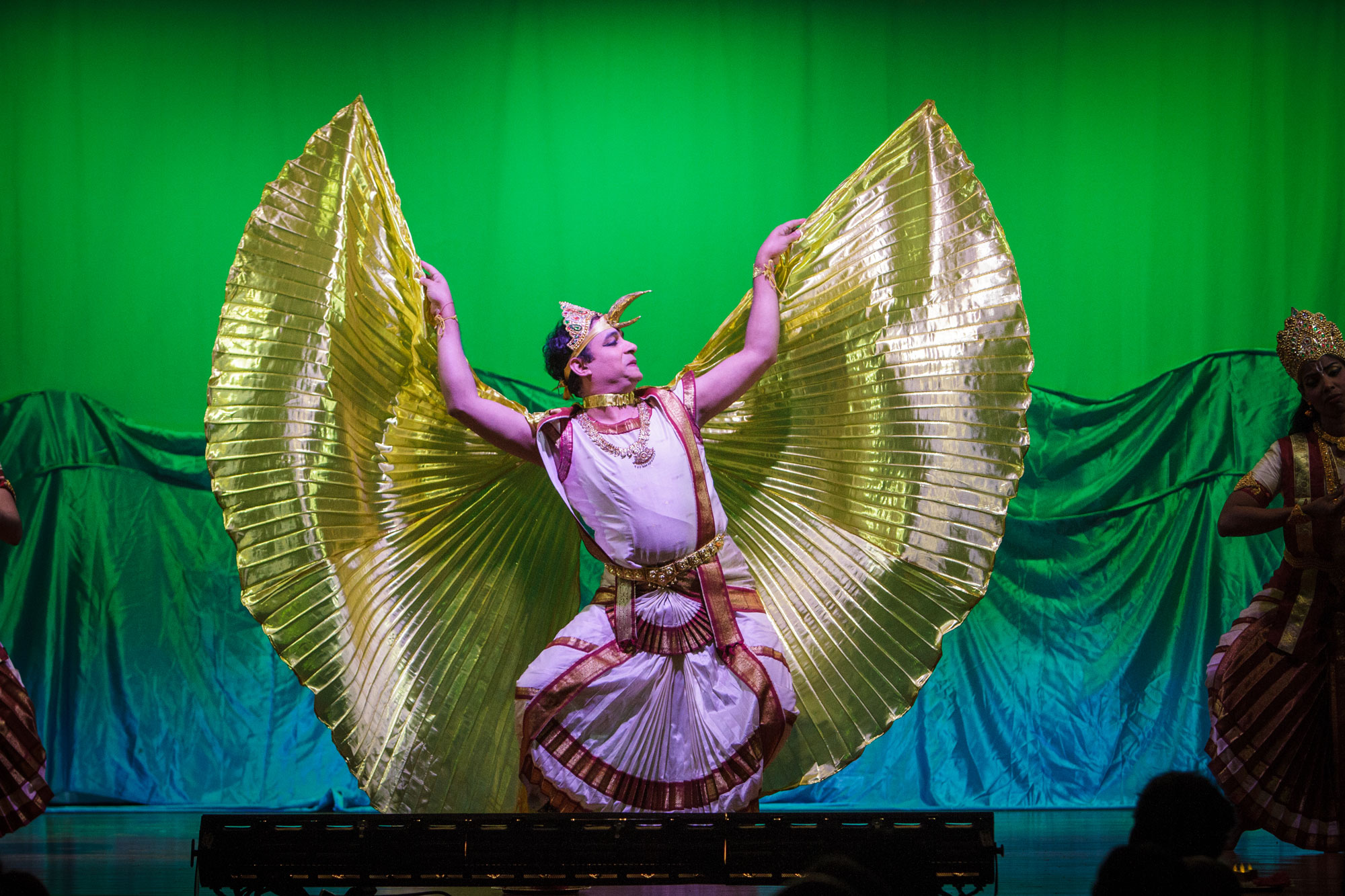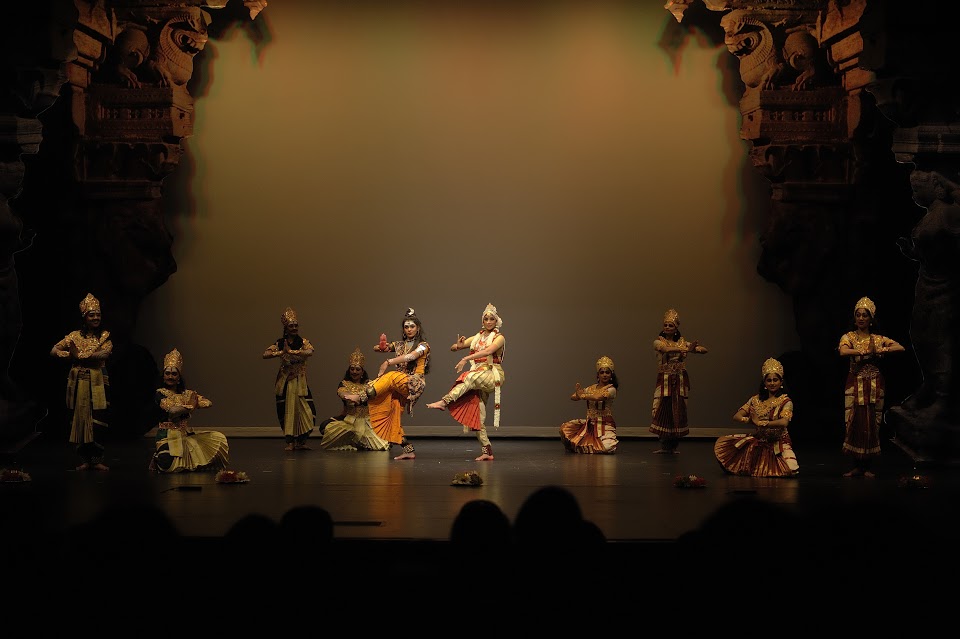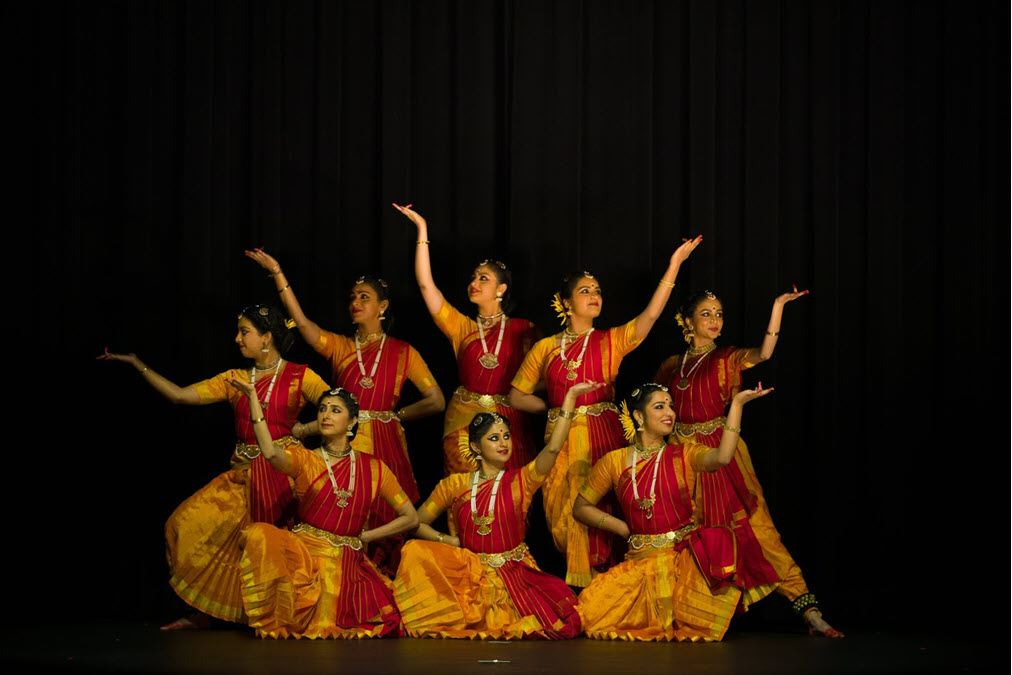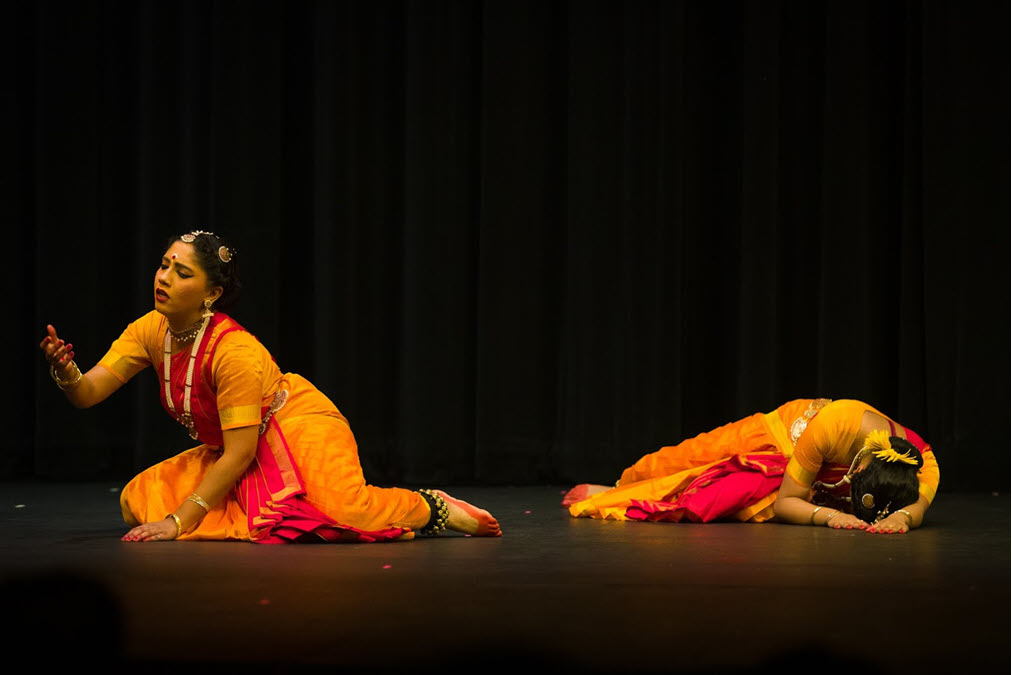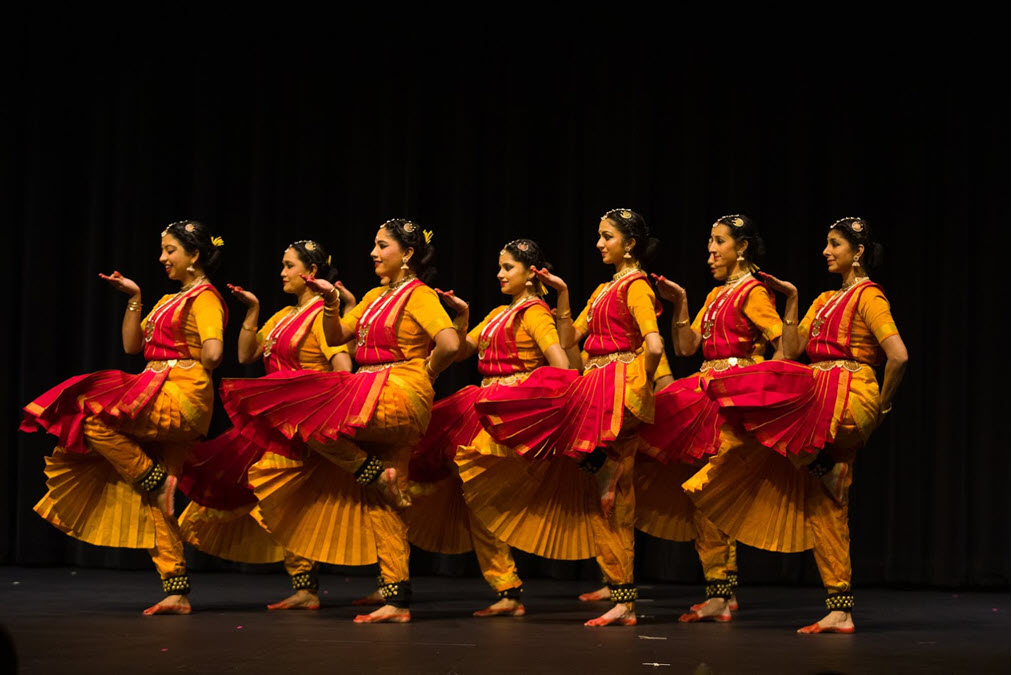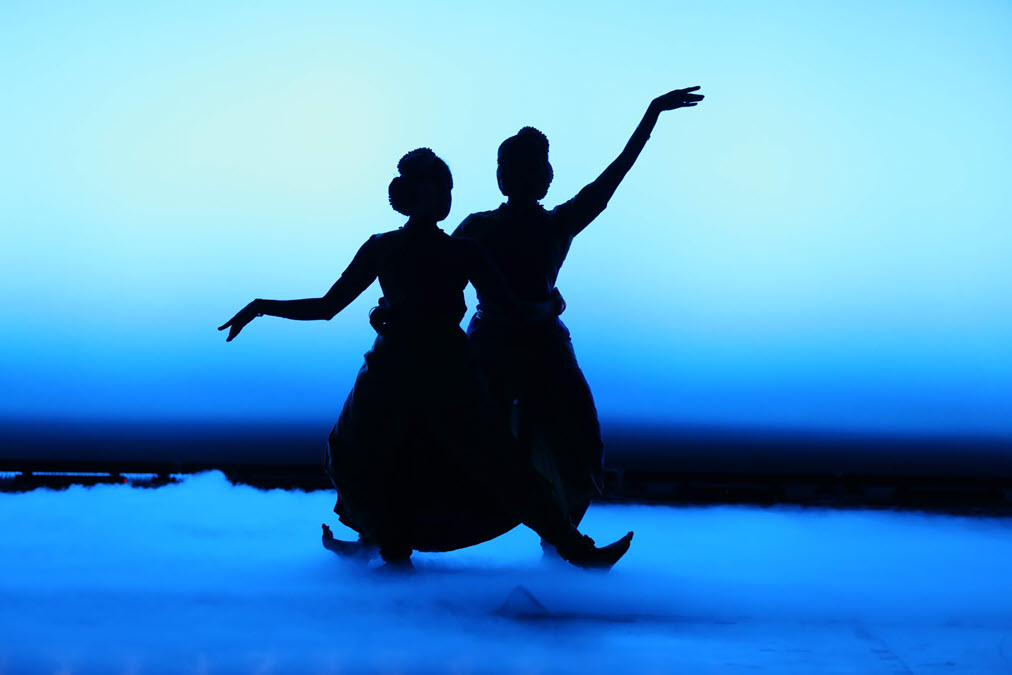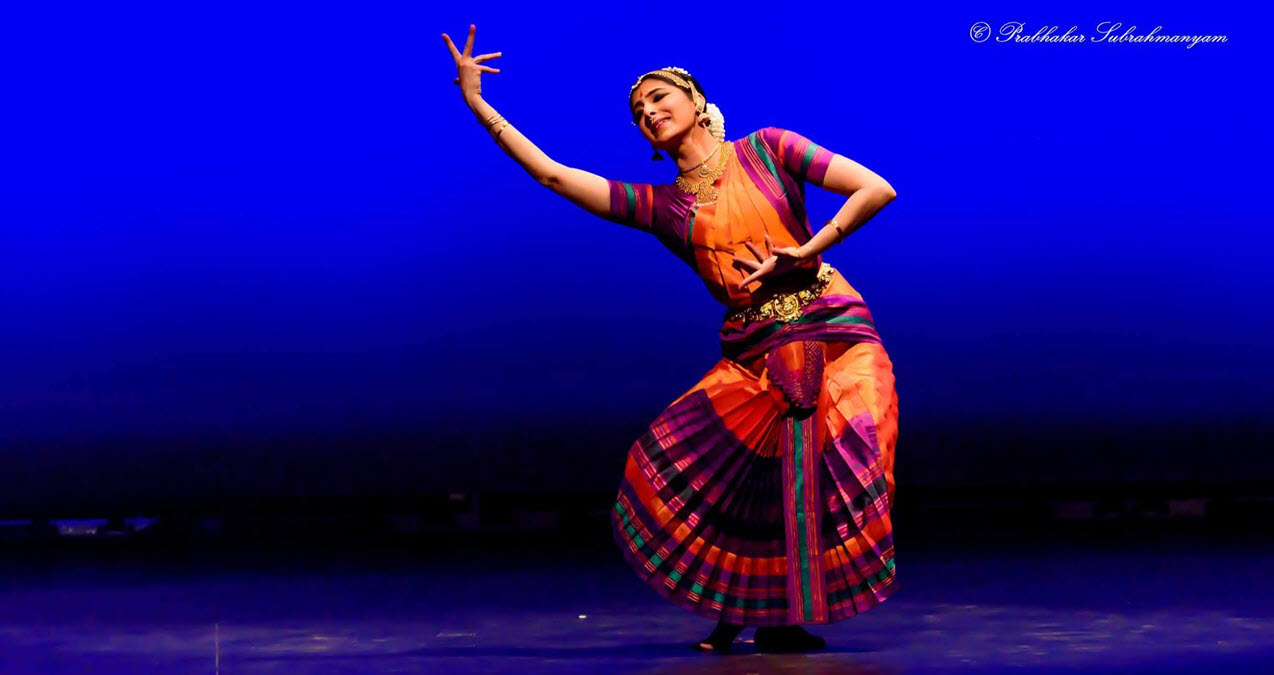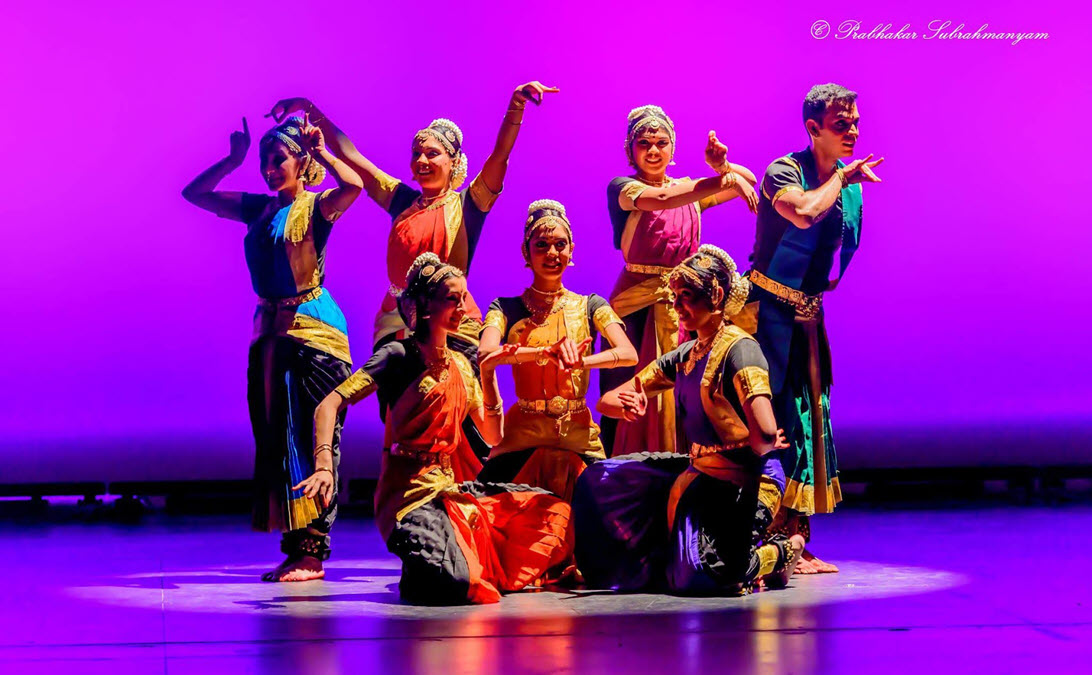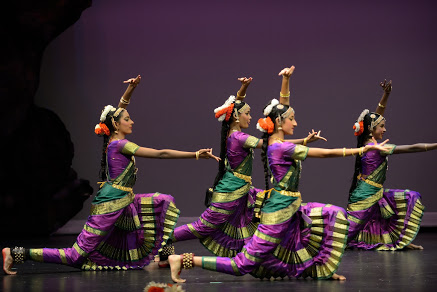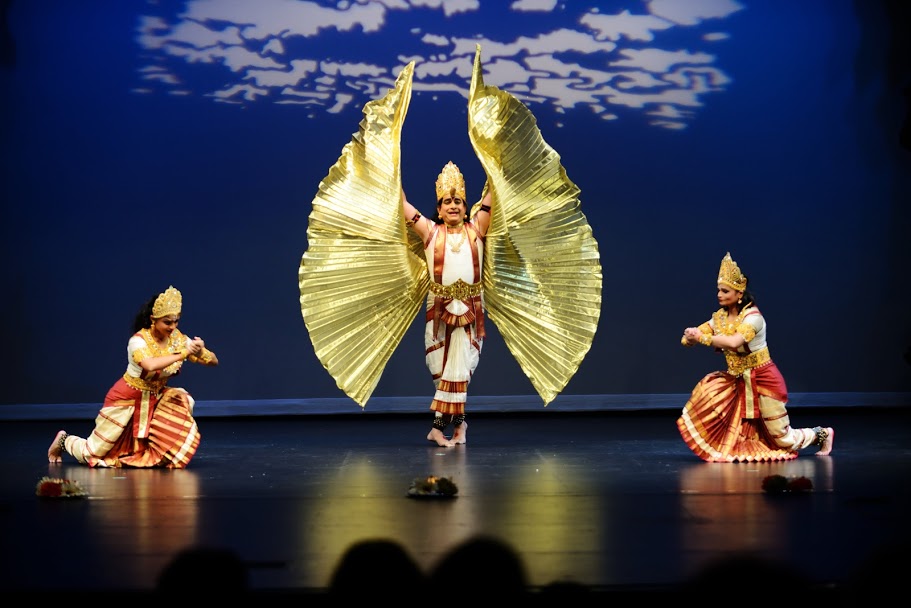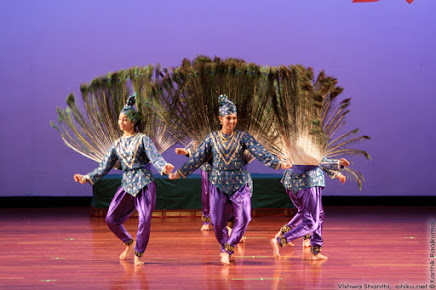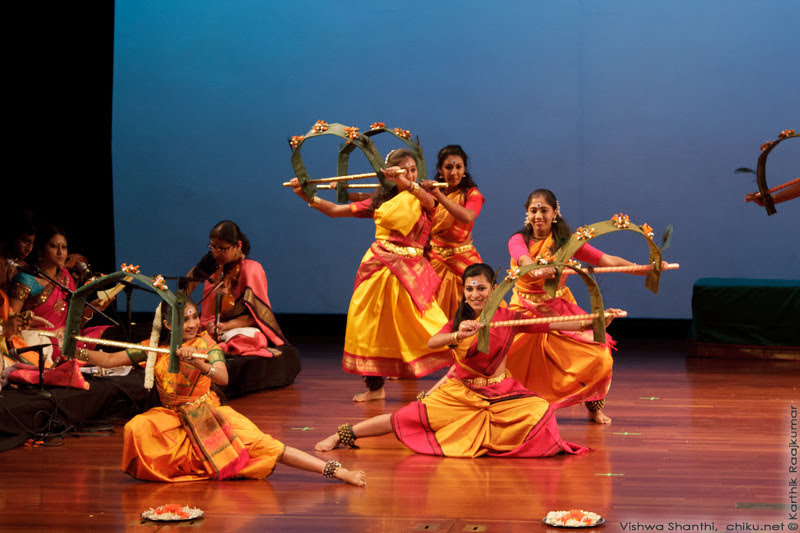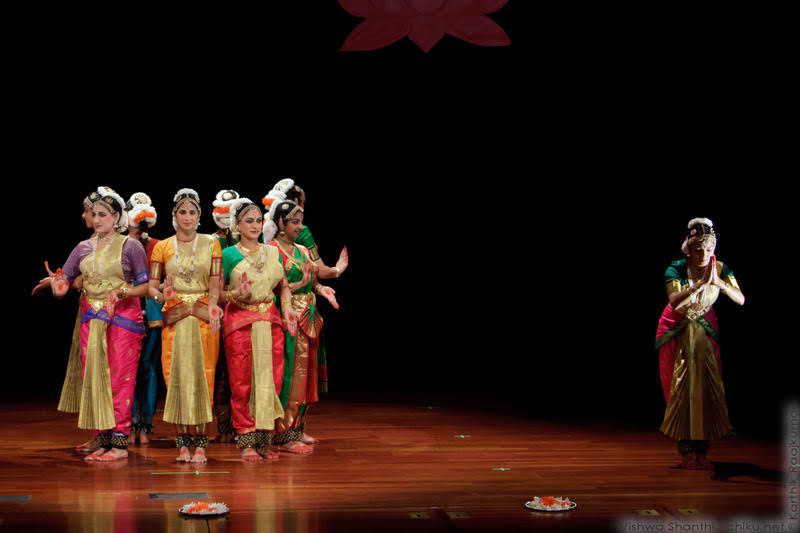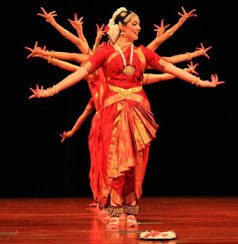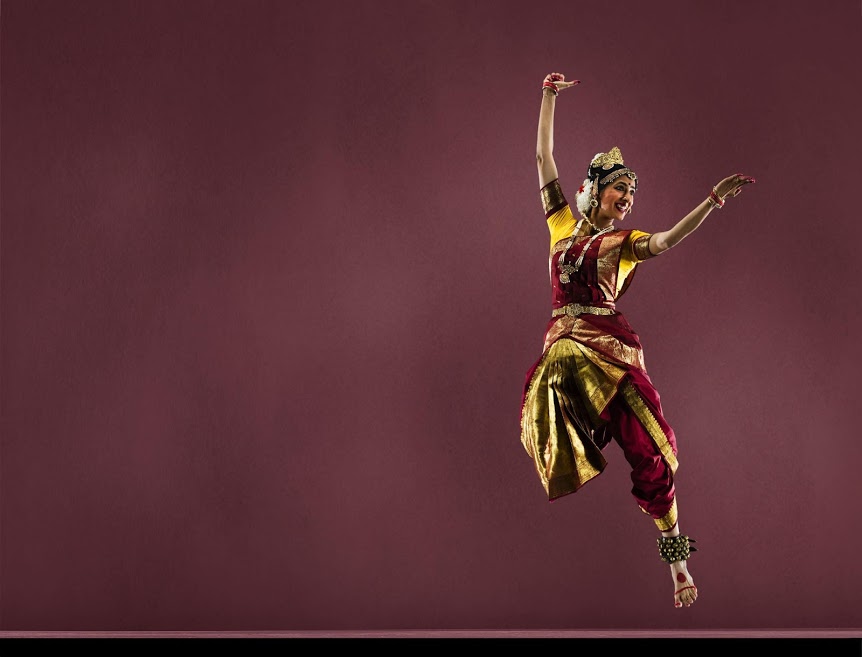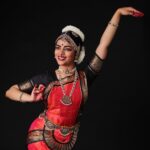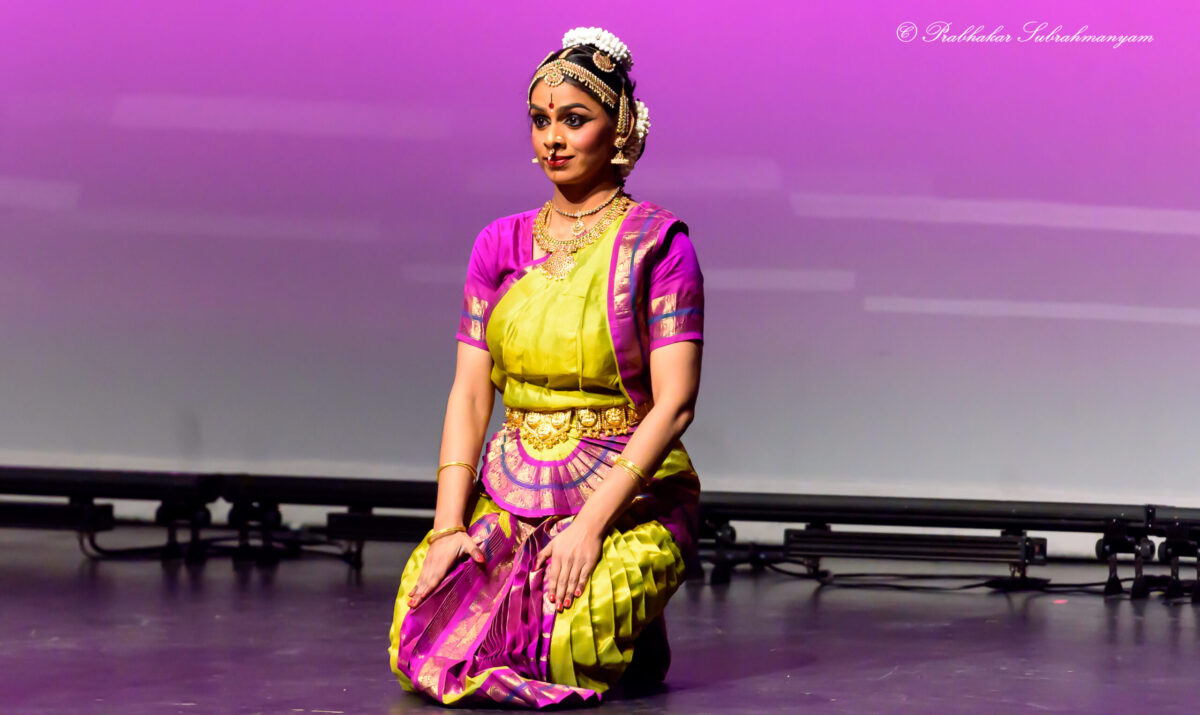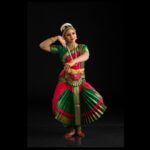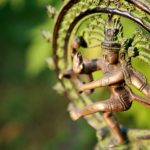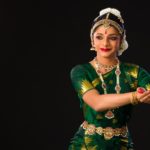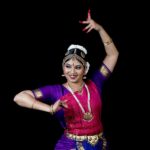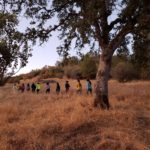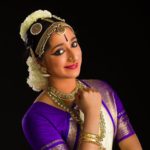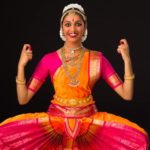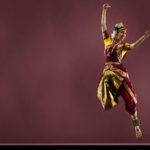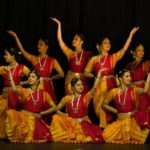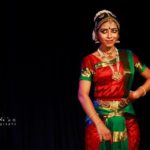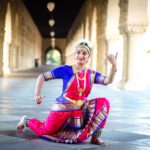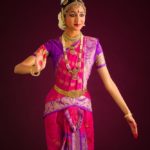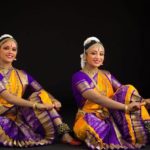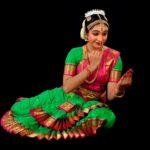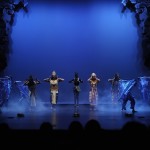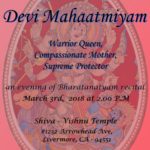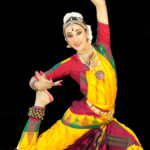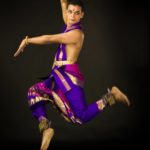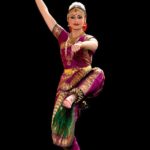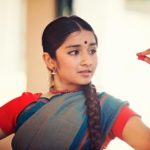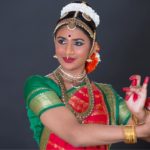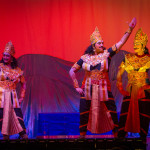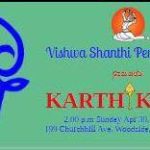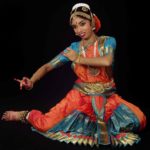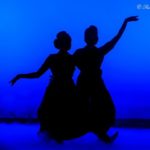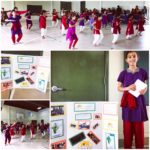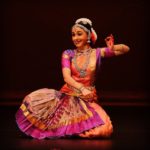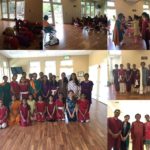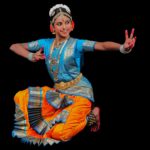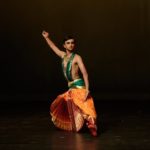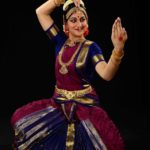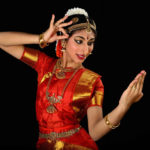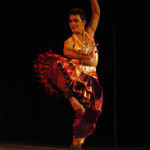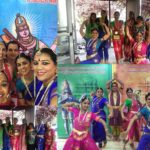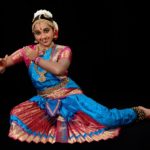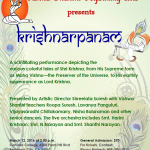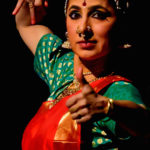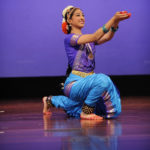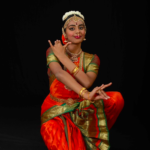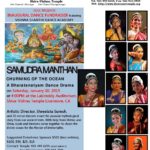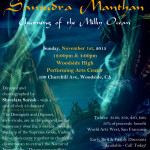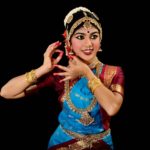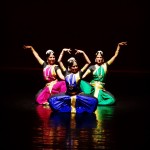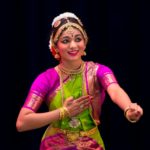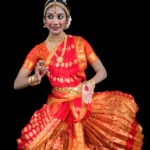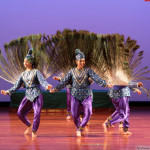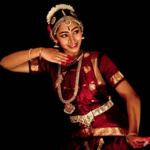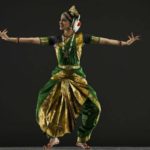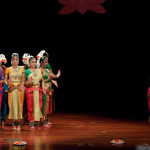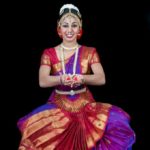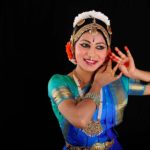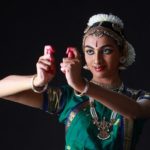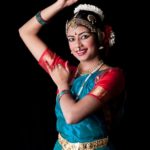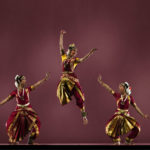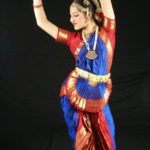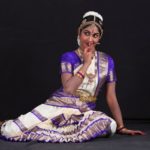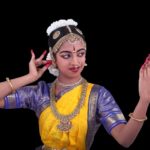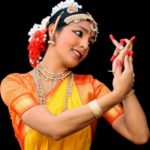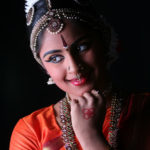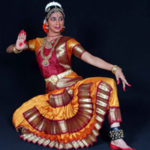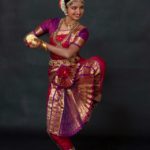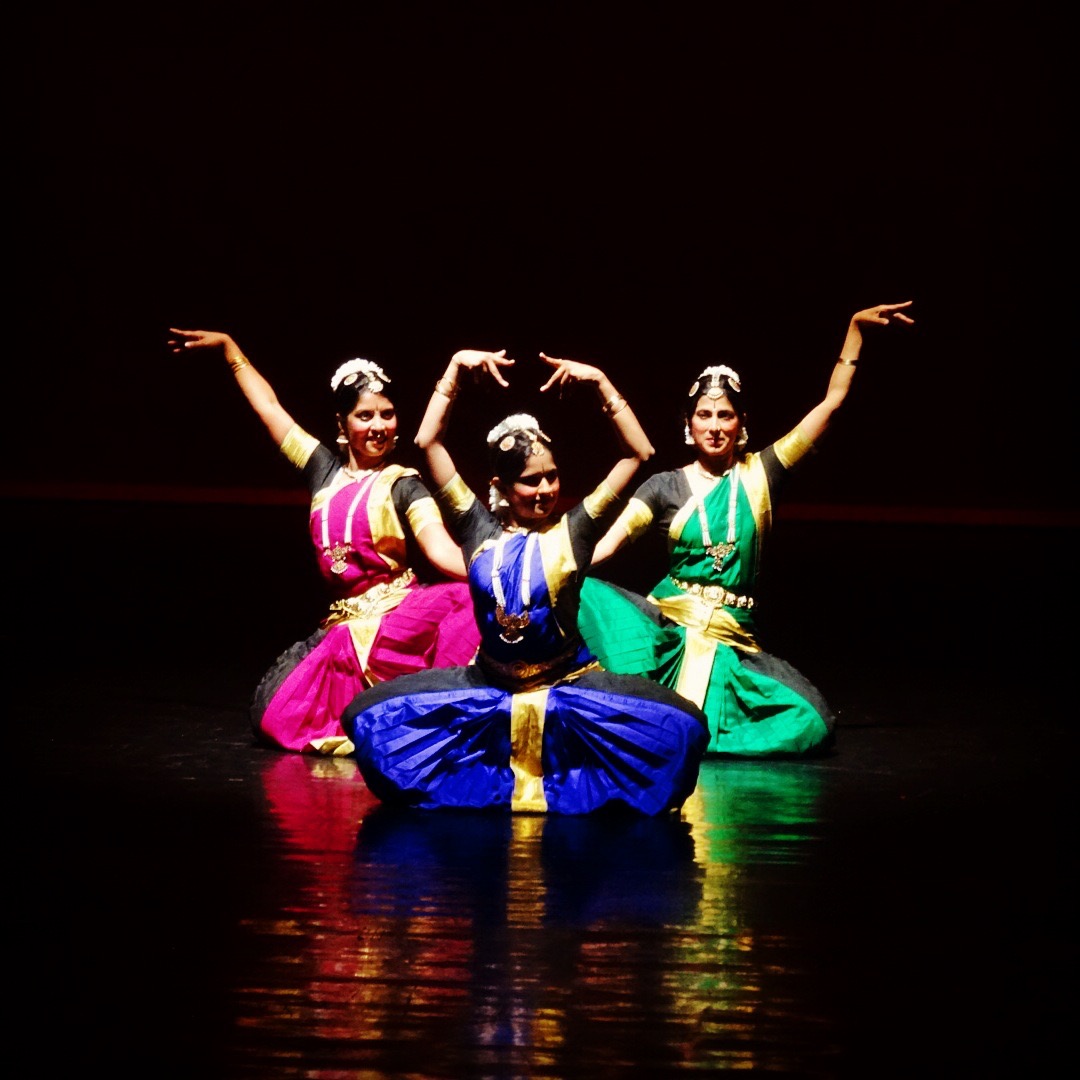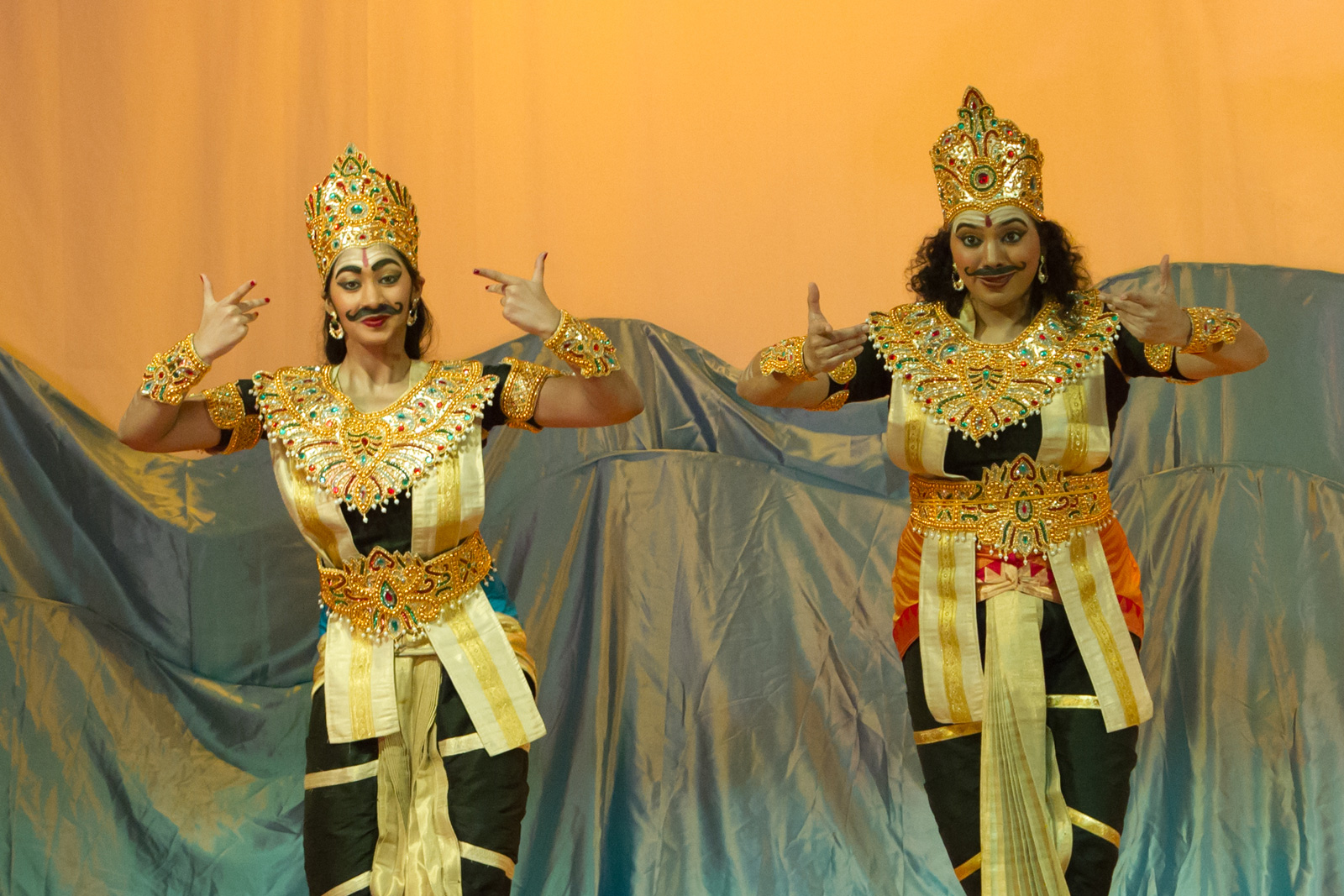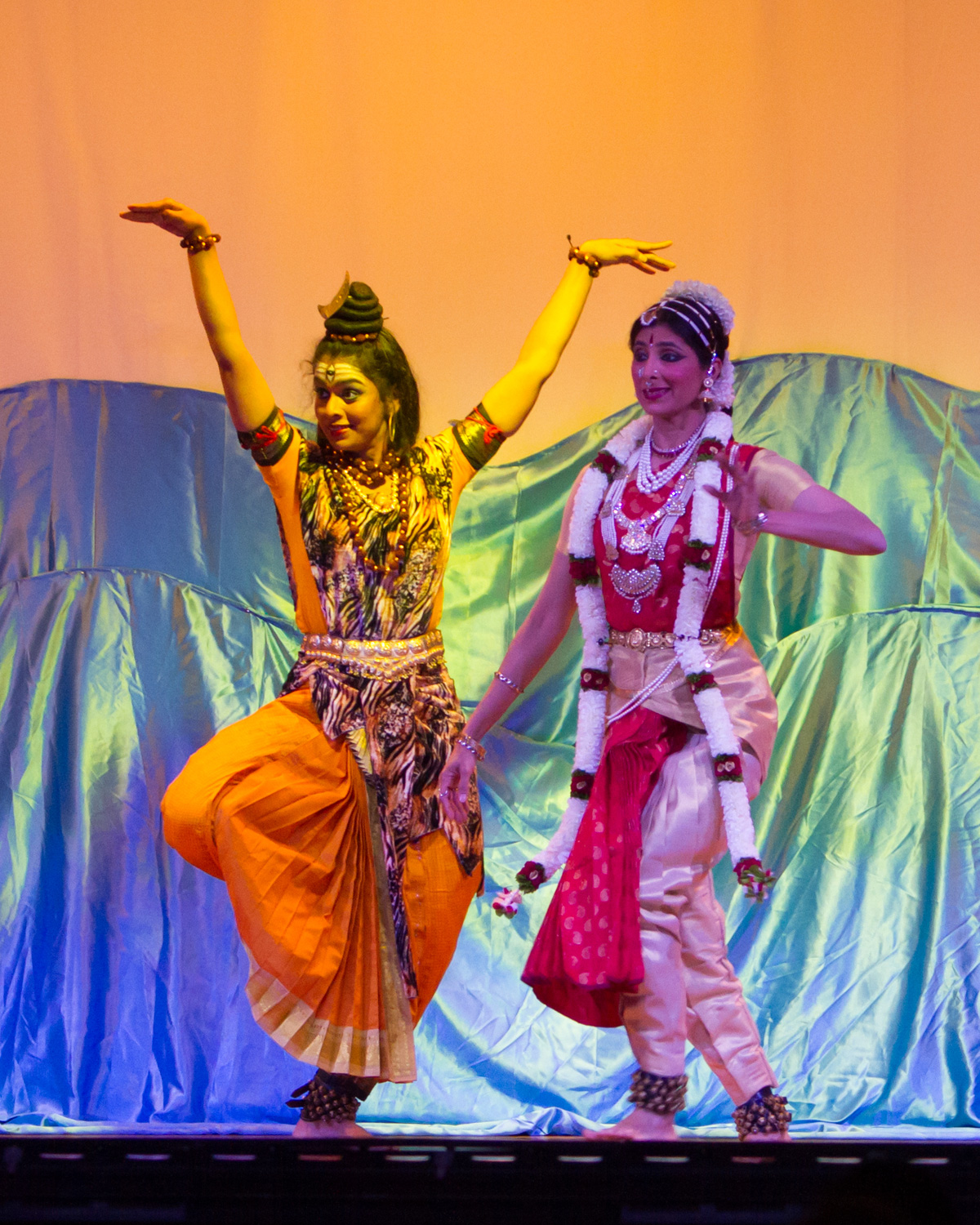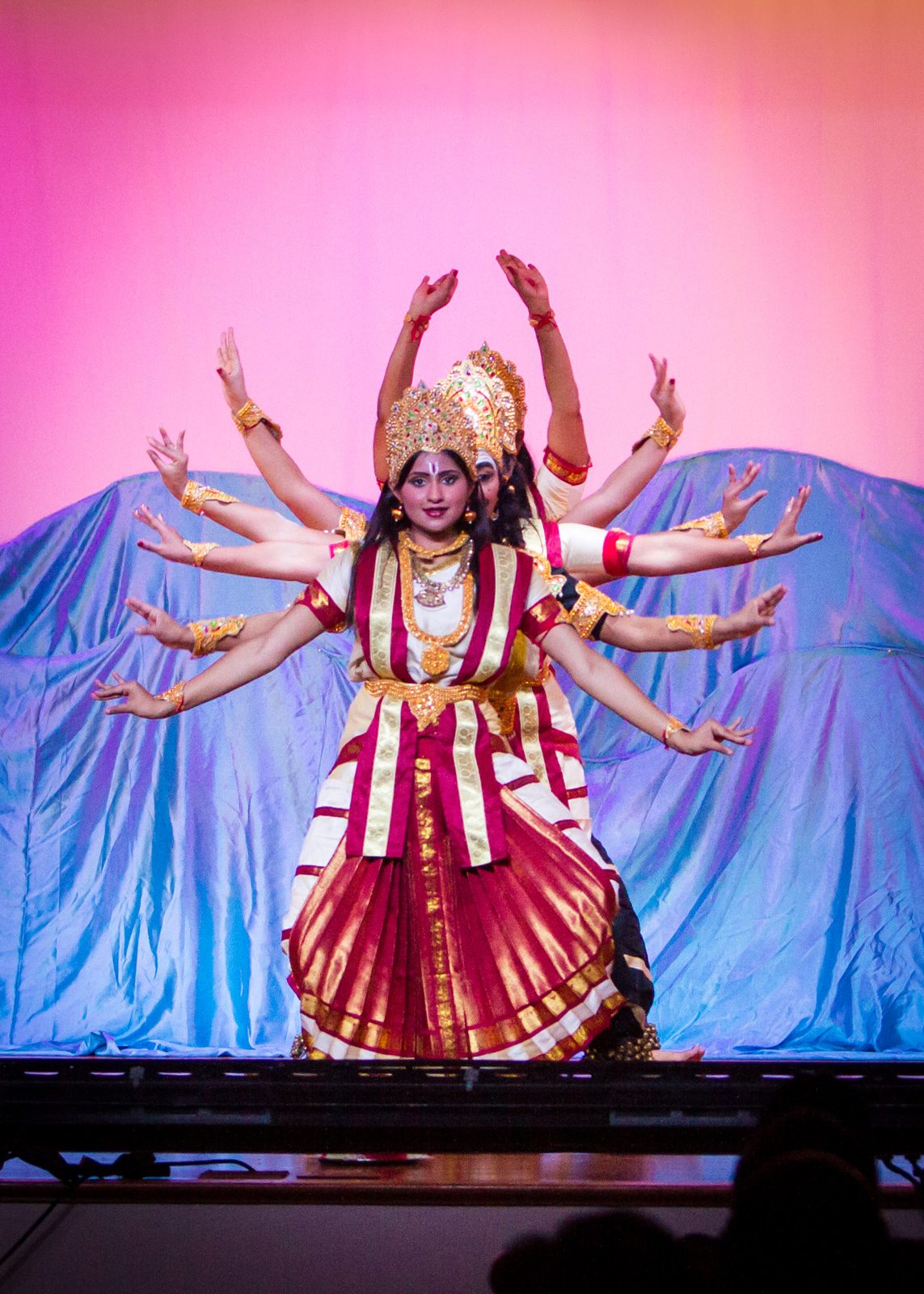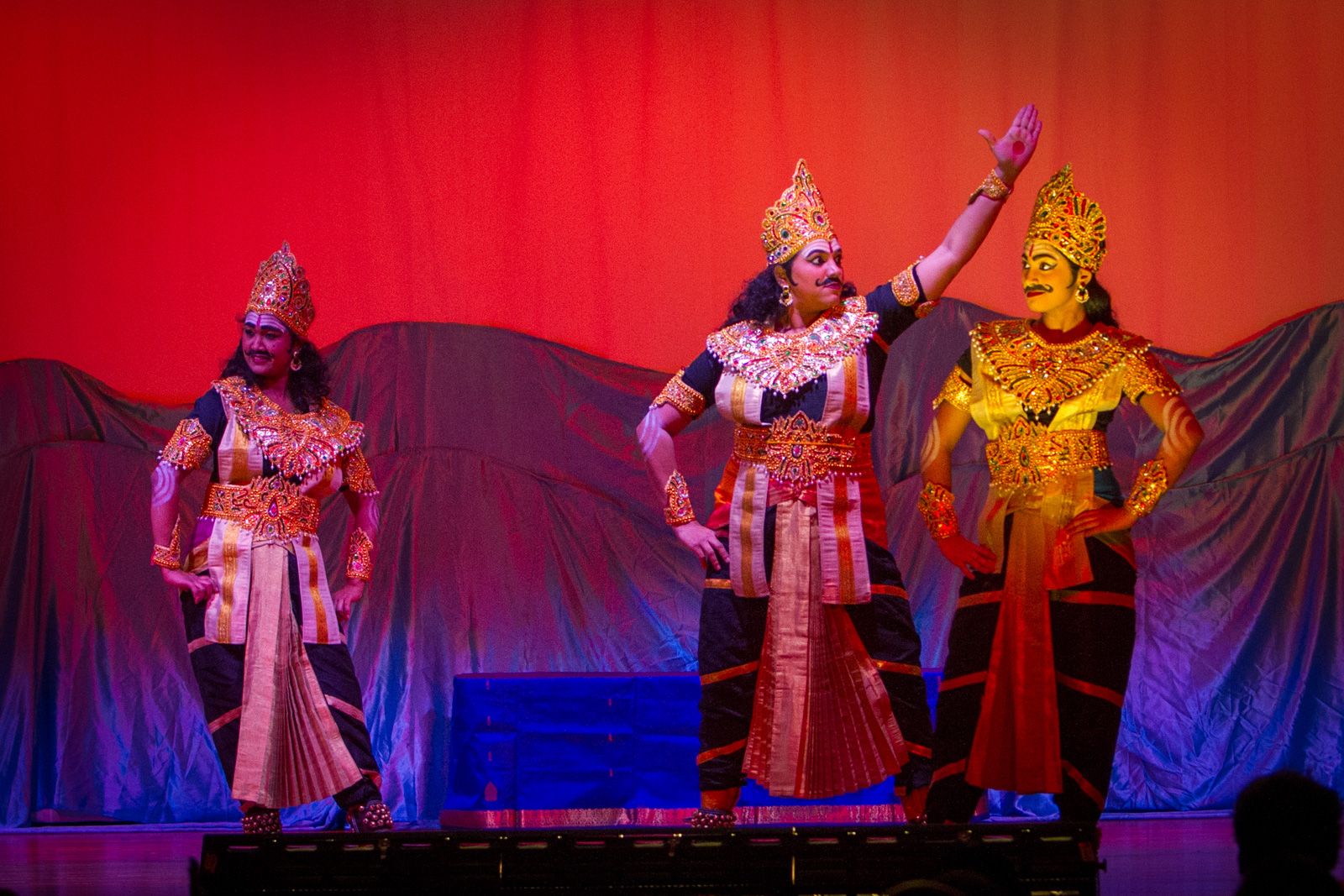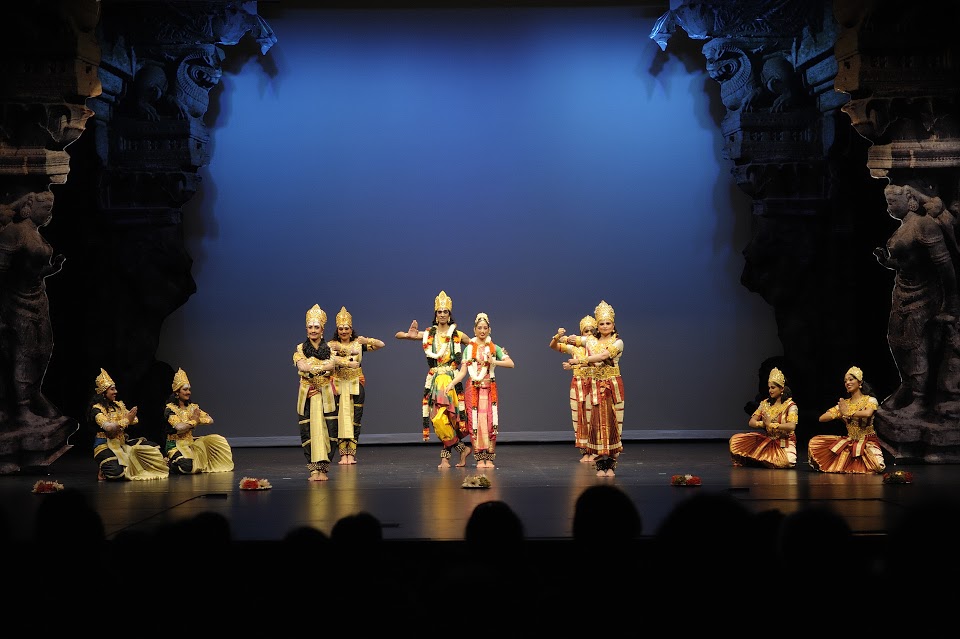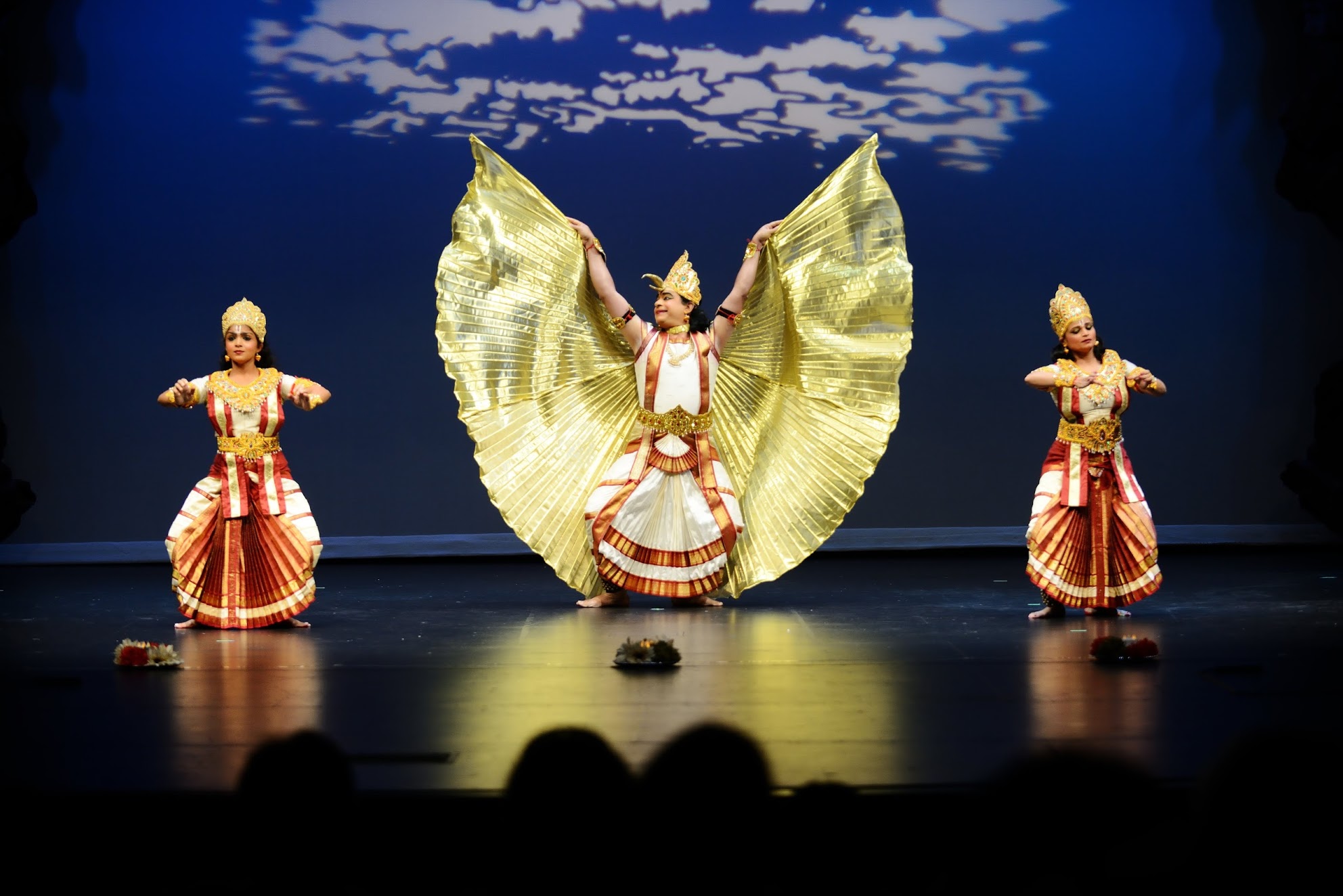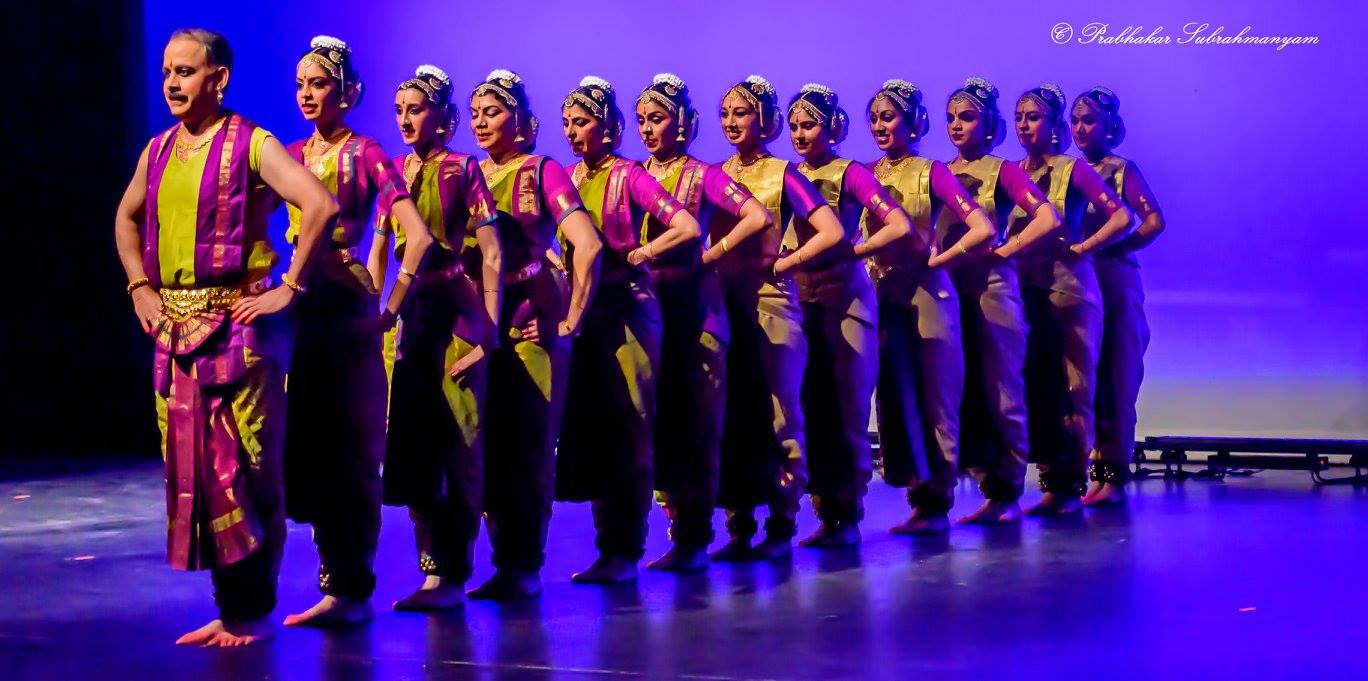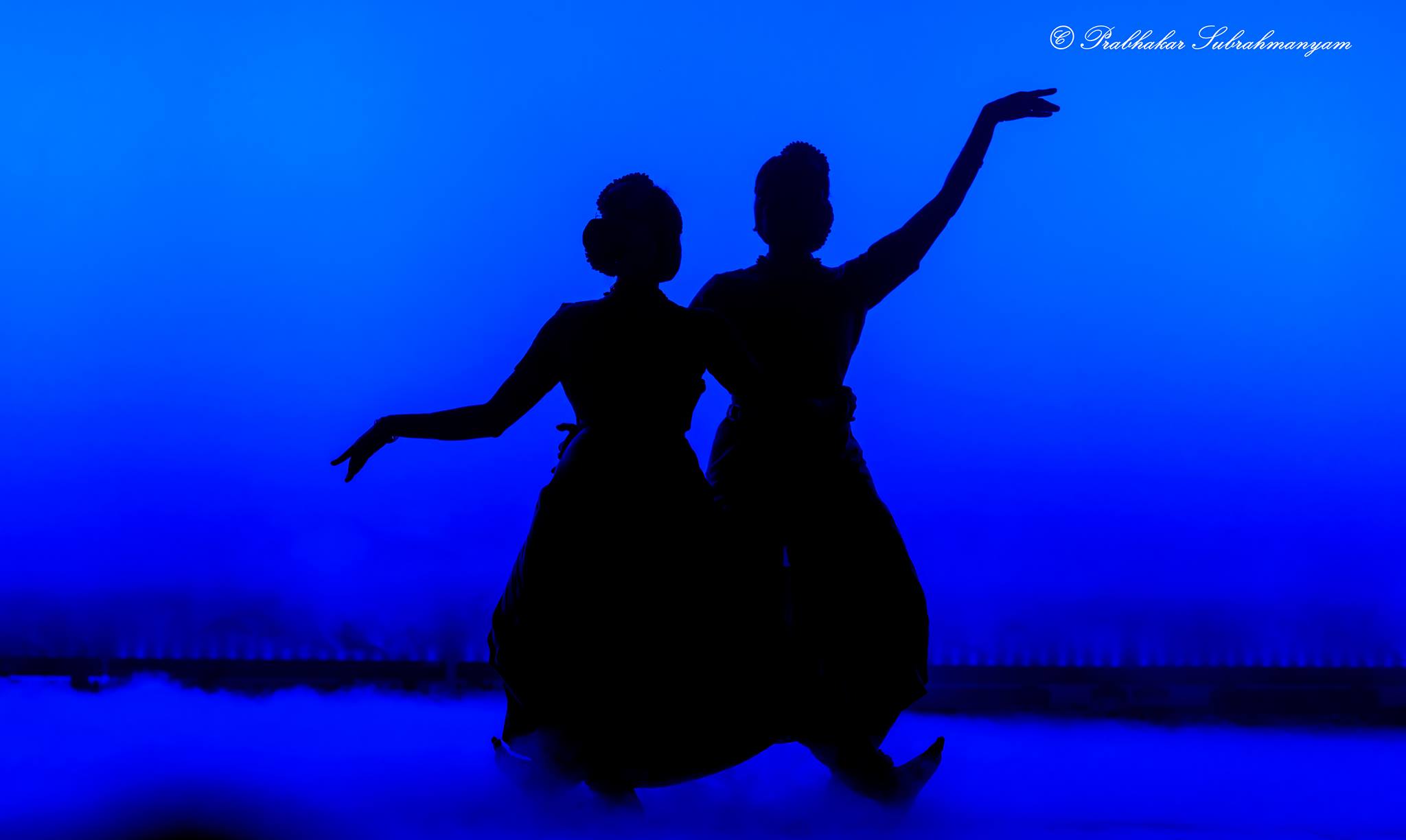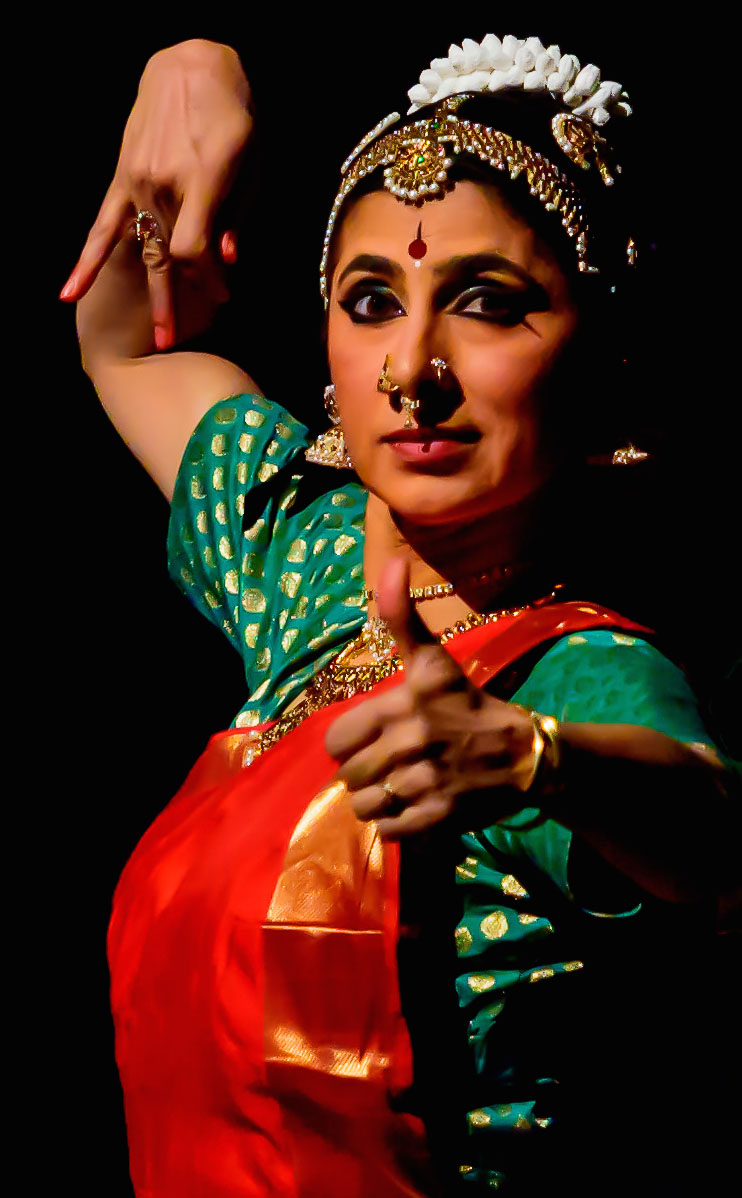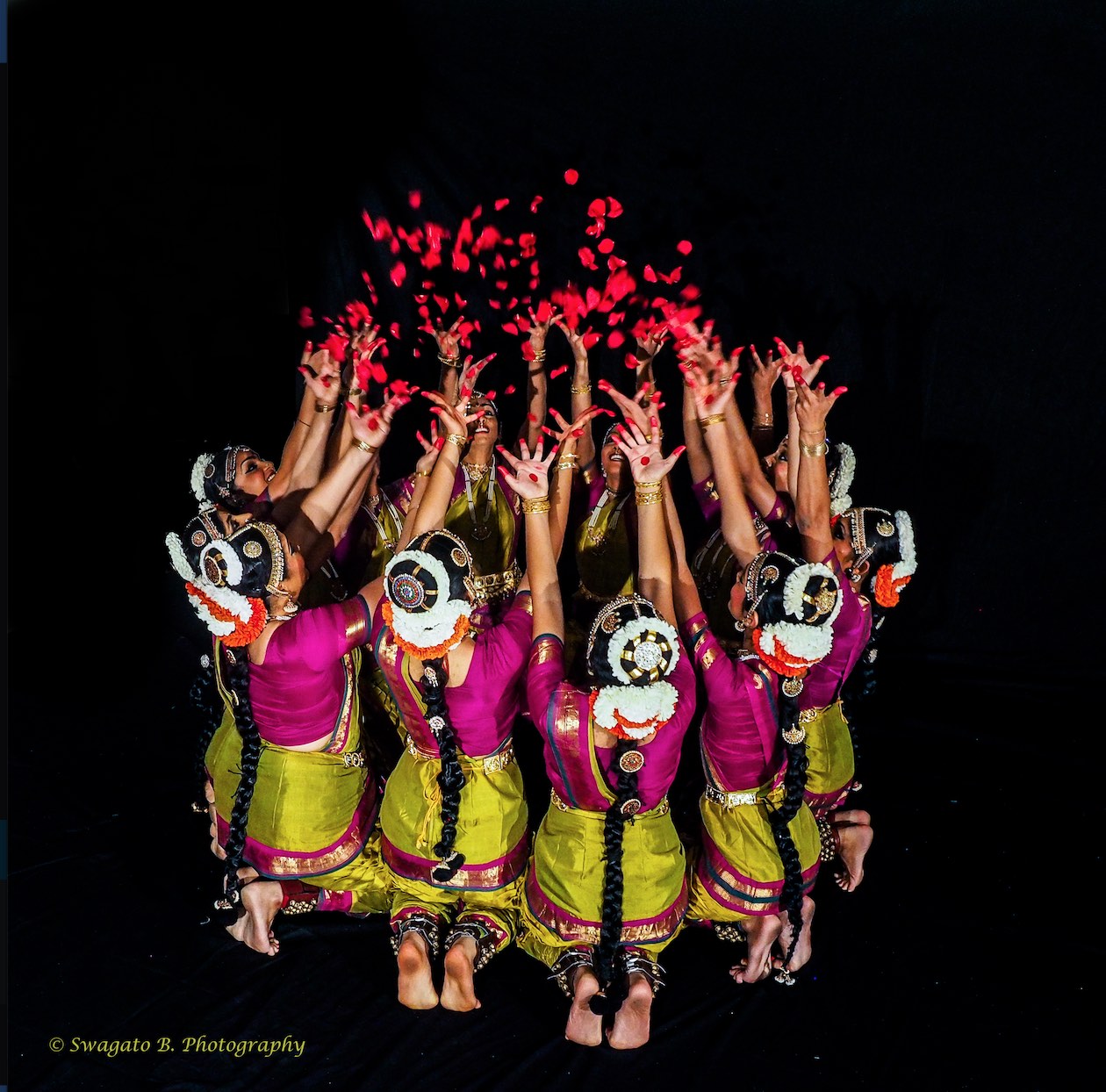Vyākrita, Under the Sacred Tree
Group Dance: 90 minutes
“Vyākrita, Under the Sacred Tree” unfolds the wisdom of the Buddha. This Bharatanatyam ballet has music specially composed in both Hindustani (Nachiketa Yakkundi) and Carnatic (Asha Ramesh) styles and with narration in English by a Javanese Gamelan and Dhalang (Puppeteer) artist.
Vyākrita enthralls the senses through beautiful song, dance, drama, and shadow puppetry while illuminating minds through Buddhist teachings. The journey of the Bodhisatta (seeker of enlightenment represented in each of us) is illustrated through his many lives. As a baby quail, he spread loving kindness; As a monkey, he combined fearlessness and foresight; And as a student, he stood with his resolve to remain truthful. These birth stories were told by Gautama Buddha when teaching his disciples the eightfold path of moral conduct and the four noble truths.
Infinite Facets: An Exploration of the Self
Group Dance; 90 minutes
“Infinite Facets: An Exploration of the Self" is a colorful portrayal of the infinite ways in which Absolute Truth is reflected in all of us, making us different but One.
Dancers illustrate through beautiful song, dance, and drama how the One Self expands into the multiplicity of the universe – the Supreme Male Force and creative Female Energy, the Trinity, the four scriptures, the five elements, and so on. Maya is mankind’s delusion in seeing division instead of understanding the Singular Truth. But through faith, effort, and perseverance, true understanding dawns on us that while forms are many, all is One that is Sat-Chit-Ananda or “Eternal Truth”, “Pure Consciousness” and “Supreme Bliss”, and we realize there is Unity in Diversity.
Samudra Manthan: Churning of the Milky Ocean
Group Dance; 90 minutes
VSPA’s first operatic work entitled "Samudra Manthan" was specially commissioned by Vishwa Shanthi, written and music composed by Chennai based poet and musicologist, PR Venkatasubramanian, sung by Guru V Krishnamoorthi, choreographed by artistic director, Shreelata Suresh and performed by her and senior company dancers in elaborate costumes and roles. The demi-Gods (Devas) and Demons (Asuras) collaborate to churn the Milky Ocean to extract the Nectar of Immortality. Unlike a typical Indian dance performance, the dance-drama format brings together more characters, stories, colors, and costumes and thus has more appeal for all ages and cultures.
Padme: The Lotus in Asian Mythology
Group Dance; 90 minutes
A Bharatanatyam dance recital that draws its inspiration from the beautiful flower, the lotus, which is sacred to many cultures; and explores the symbolism of the lotus in Asian mythology. In the sacred Ancient language, Sanskrit, Padme is a lotus. The lotus is regarded as a symbol of creation, purity, and enlightenment. It rises from the deep muddy waters to blossom into a pure and perfect flower, untouched by the mire. Similarly, our consciousness evolves from base impulses and worldly imperfections to spiritual liberation.
According to Indian mythology, Vishnu came forth in a golden lotus from the milky ocean. From his navel, arose a lotus and Brahma the creator was seated in the center of the flower and creation began. The Buddhist prayer, "Om Mani Padme Hum", symbolizes the pure exalted body, speech, and mind of the compassionate Buddha. With pure dance and mime, through hymns and Buddhist tales, and joyful folk dances, the dancers in Padme embark on a journey from the beginning of the universe and conclude at the lotus feet of the Lord symbolizing the surrender of the Self to the Creator who resides in the lotus of our hearts.
Poorthi
Group Dance; 10 minutes
This Izzie nominated choreography has been presented twice at the San Francisco Ethnic Dance Festival.
Sthithi
Group Dance; 60 minutes
This is a complete program that depicts how divine creation in its duality of good and evil forces is preserved permanently by the life force. (The main piece is the Dasavatharam where Lord Vishnu protects the world through his ten Avathars)
Srishti
Group Dance; 60 minutes
Srishti is entirely in the south Indian language of Tamil, and portrays the traditional Margam (repertoire) as a metaphor for creation.
Sadashiva
Solo or Group Dance; 60 minutes
Live orchestra
Sadashiva is an homage to the Lord, Shiva - the supreme dancer, Nataraja, the divine aesthetic, Yogeswar, the cosmic human being, Ardhanari (half man, half-woman), the fearsome destroyer, Rudra and the benevolent one, Shankar. Sadashiva is the celebration of the ever Auspicious one, Shiva.
Devi Mahaatmiyam
Group Dance; 90 minutes
The great mother-goddess, Shakthi manifests as Lakshmi, goddess of prosperity, Saraswathi, the embodiment of knowledge, Parvathi, the goddess of strength and valor and as Durga the destroyer of evil. Hymns from the ancient Hindu texts describe her “By you this universe is borne, By you, this world is created, Oh Devi, by you it is protected”
Karthikeya
Solo or Group Dance; 60 minutes
The lively stories of the young god of war, Karthikeya, are depicted through a mix of folk and classical dances of South India. The highlight of this presentation is a composition describing the legends of the six main temples of Muruga.
Krishnarpanam
Solo or Group Dance; 90 minutes
Krishna is exalted in this thematic presentation. Choreography highlights different episodes from Krishna’s life - from his birth and his childhood pranks in Brindavan, to being the central character in the Mahabharata and reciting of the Bhagavad Gita.

